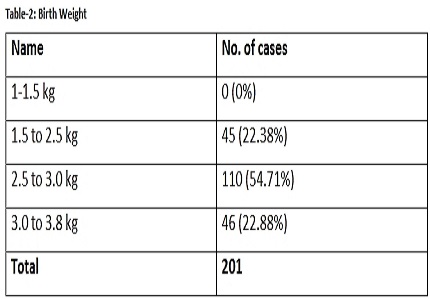Early detection of autism – comparison of two screening tools
Abstract
Introduction: The aim of the study was comparison of a newly developed test Trivandrum Autism behaviour checklist with gold standard test, CHAT.
Method: The present study was done in pediatric OPD (Bundelkhand Medical College, Sagar, (MP). The study was done in the children of 24 to 36 month of age over a period of one year. The study including sex, age of the father & mother, education of father & mother, place of residence, antenatal history, natal & neonatal history, immunization history, developmental history and also two tools – CHAT & TABC.
Result: There are many factors taken during study but there is relation between these factors and Autism. However, Autism is more common in age group of 21 to 30 month of age and also common in male than female. It is more common in urban areas. It is shown that the Birth weight of babies were 2.5 to 3.00kg. The incidence is also high in immunized children. There is no relation with age and education of the parents, Antenatal History, Developmental history. In present study, the maximum no. of cases were screened by CHAT test (28 case) while 11 cases by TABC case. However, 11 cases were screen by both CHAT and TABC. In study sensitivity of the TABC (Trivandrum Autism behaviour checklist) 39.2 it is low, hence TABC is not good test for screening. Specificity 99.4 it is high, hence TABC is good test for diagnosis or confirmatory test.
Conclusion: It is shown that chat is a good test for screening of Autism then TABC. The TABC is good test for the diagnosis or confirmation of the disease.
Downloads
References
2. Di Martino A, Ross K, Uddin LQ, Sklar AB, Castellanos FX, Milham MP. Functional brain correlates of social and nonsocial processes in autism spectrum disorders: an activation likelihood estimation meta-analysis. Biol Psychiatry. 2009 Jan 1;65(1):63-74. doi: 10.1016/j.biopsych.2008.09.022. Epub 2008 Nov 8. [PubMed]
3. Ji N, Findling RL. An update on pharmacotherapy for autism spectrum disorder in children and adolescents. Curr Opin Psychiatry. 2015 Mar;28(2):91-101. doi: 10.1097/YCO.0000000000000132. [PubMed]
4. Ha S, Sohn IJ, Kim N, Sim HJ, Cheon KA. Characteristics of Brains in Autism Spectrum Disorder: Structure, Function and Connectivity across the Lifespan. Exp Neurobiol. 2015 Dec;24(4):273-84. doi: 10.5607/en.2015.24.4.273. Epub 2015 Dec 16. [PubMed]
5. Crespi B, Stead P, Elliot M. Evolution in health and medicine Sackler colloquium: Comparative genomics of autism and schizophrenia. Proc Natl Acad Sci U S A. 2010 Jan 26;107 Suppl 1:1736-41. doi: 10.1073/pnas.0906080106. Epub 2009 Dec 1. [PubMed]
6. Reichow B, Barton EE, Boyd BA, Hume K. Early intensive behavioral intervention (EIBI) for young children with autism spectrum disorders (ASD). Cochrane Database Syst Rev. 2012 Oct 17;10:CD009260. doi: 10.1002/14651858.CD009260.pub2. [PubMed]
7. Patterson PH. Maternal infection and immune involvement in autism. Trends Mol Med. 2011 Jul;17(7):389-94. doi: 10.1016/j.molmed.2011.03.001. Epub 2011 Apr 7. [PubMed]
8. Rossignol DA, Frye RE. Evidence linking oxidative stress, mitochondrial dysfunction, and inflammation in the brain of individuals with autism. Front Physiol. 2014 Apr 22;5:150. doi: 10.3389/fphys.2014.00150. eCollection 2014. [PubMed]
9. Doja A, Roberts W. Immunizations and autism: a review of the literature. Can J Neurol Sci. 2006 Nov;33(4):341-6. [PubMed]
10. Baird G, Cass H, Slonims V. Diagnosis of autism. BMJ. 2003 Aug 30;327(7413):488-93. [PubMed]
11. Biever C. Web removes social barriers for those with autism. Archived from the original on 20 Oct. 2012; (2610): 26-7.

Copyright (c) 2017 Author (s). Published by Siddharth Health Research and Social Welfare Society

This work is licensed under a Creative Commons Attribution 4.0 International License.


 OAI - Open Archives Initiative
OAI - Open Archives Initiative


